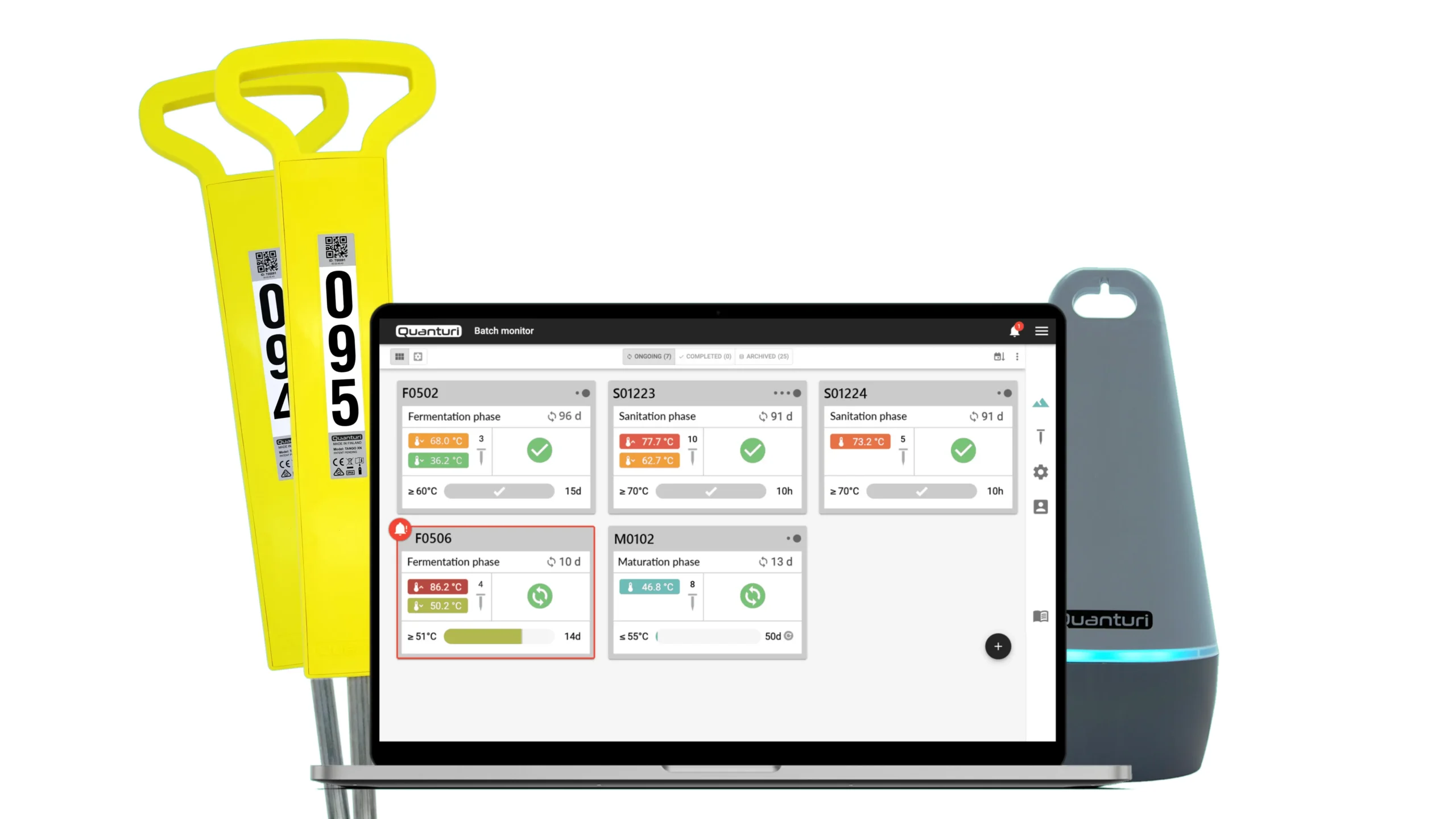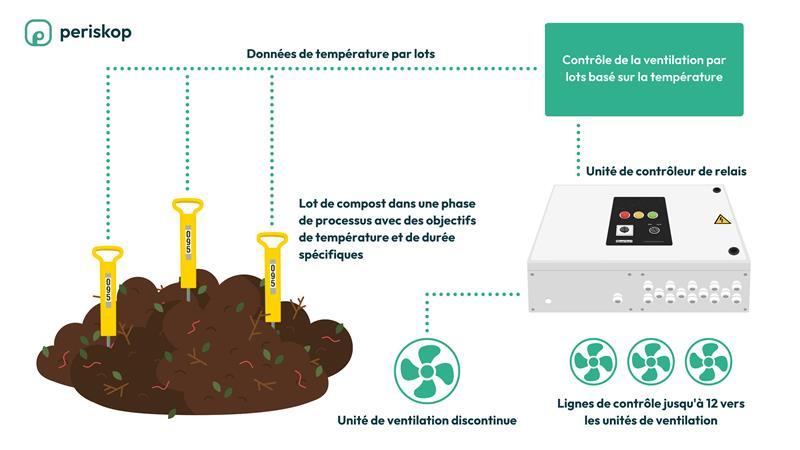How does large scale composting work?
Large scale composting is an industrial process that decomposes organic waste materials, such as food scraps, yard waste, and agricultural residues, into nutrient-rich compost on a substantial scale. This method typically uses advanced techniques and heavy composting machinery to manage and accelerate the process, ensuring efficient breakdown of organic matter.
Why is industrial scale composting important?
Environmental benefits
Composting on a commercial scale helps divert large amounts of organic waste from landfills, reducing methane emissions and contributing to a decrease in overall greenhouse gas emissions. According to U.S Environmental Protection Agency, Municipal solid waste landfills account for 14% of human-related methane emissions with food waste responsible for 58% of landfill methane emissions.
Agricultural benefits
With large scale waste recycling, the resulting compost enriches soil with essential nutrients and carbon, enhancing soil health, fertility, and structure. This can lead to improved agricultural productivity and reduced reliance on chemical fertilizers. The research by Drs.Shikha Singh and Burke at Washington State University found that compost application in dryland wheat systems increases wheat yields, especially at 20 tons per acre, and can provide sufficient nutrients without external fertilizers.
Read case study: San Francisco zero waste case study
What is compostable material in commercial composting?
In bio waste recycling, compostable materials refer to organic substances that can decompose naturally under aerobic conditions to form compost. These materials include a variety of plant and animal-based items that break down effectively to enrich soil.
Green materials for composting
Food waste: Vegetable scraps, fruit peels, coffee grounds, and eggshells.
Yard trimmings: Grass clippings, leaves, and garden waste.
Manure: From herbivores like cows, horses, and chickens.
Brown materials for composting
Paper products: Unbleached paper, cardboard, and paper towels.
Wood products: Sawdust, wood chips, and untreated wood shavings.
Dried plant material: Straw, hay, and dried leaves.
These materials are classified into ‘greens’ (high nitrogen content) and ‘browns’ (high carbon content) to ensure a balanced composting process. Proper ratios are crucial for microbial activity, which breaks down the organic matter.
Non-compostable materials like plastics, metals, glass, and synthetic chemicals are strictly avoided as they do not decompose and can contaminate the compost.
The industrial scale composting process
Large composting operations involve initial collection and sorting, shredding, and mixing of materials to accelerate decomposition, followed by regular turning and monitoring to maintain optimal conditions for composting.
Collection: Organic waste materials such as food scraps, yard waste, and agricultural residues are collected from various sources.
Preparation: The collected waste is sorted to remove non-compostable items. The organic material is then shredded to increase surface area, promoting faster decomposition.
Decomposition: The prepared material is placed into composting systems where microorganisms break down the organic matter. This phase generates heat, reducing pathogens and weed seeds.
Curing: After initial decomposition, the compost is left to cure. During this phase, it continues to stabilize and mature, ensuring it is safe and beneficial for soil application.
Industrial organic recycling methods
Large scale windrow composting: The windrow composting process, in which organic material is arranged in long rows and periodically turned to maintain aeration and temperature, is widely used. According to a press release issued by the US Compost Council in 2024, 42% of composting facilities utilized this method.
Aerated static pile: Compost piles are aerated with blowers or vacuum systems, eliminating the need for turning and ensuring adequate oxygen supply.
In-Vessel: Organic waste is composted in enclosed containers or vessels. This system allows for precise control of environmental conditions such as temperature, moisture, and aeration, resulting in faster composting.
Key factors for successful sustainable waste management
- Carbon-to-Nitrogen ratio: A balanced ratio of carbon-rich (brown) materials and nitrogen-rich (green) materials is crucial. According to Cornell Composting, the ideal carbon-to-nitrogen (C:N) ratio is generally about 30:1. It varies in each composting stage.
Moisture content: Maintaining adequate moisture is vital for microbial activity. The compost should be as damp wrung-out sponge, with moisture levels around 40-60%.
Oxygen levels: Aeration is essential for aerobic decomposition. Regular turning or forced aeration ensures that microorganisms receive the oxygen needed to break down organic matter efficiently.
Advanced composting technology
Key equipment includes shredders, turners, screens, and composting pads.
- A wireless temperature monitoring system for compost windrows ensures regulatory compliance and optimal microbial activity through continuous temperature tracking and automated ventilation control.
- Compost shredders break down large organic materials into smaller pieces, facilitating faster decomposition.
- Compost turners are essential for aerating the compost piles, ensuring that oxygen is evenly distributed to aid microbial activity.
- Screens separate finished compost from larger, undecomposed materials, allowing for a uniform product.
- Composting pads provide a stable and impermeable surface for compost piles, preventing contamination of the underlying soil and groundwater.
Staffing and management for commercial composting
Effective staffing and management are crucial for operational success. Key roles include a site manager, who oversees daily operations and compliance with regulations; equipment operators, who manage and maintain machinery; and quality control personnel, who monitor the composting process to ensure quality standards are met.
Additional staff may include logistics coordinators for managing incoming and outgoing materials and health and safety officers to enforce safety protocols.
Regulatory considerations for composting
Compliance with regulatory standards is essential. This includes obtaining necessary permits for operation, which often involve environmental impact assessments. Adhering to environmental regulations ensures that the operation does not negatively impact air, water, or soil quality.
Safety guidelines must be strictly followed to protect workers from potential hazards associated with composting, such as exposure to pathogens or hazardous machinery. Regular inspections and documentation are often required to maintain compliance and operational transparency.
By integrating these components, a large-scale composting operation can effectively manage organic waste, produce high-quality compost, and operate sustainably within regulatory frameworks.
Final thoughts
Large-scale composting is an industrial process that efficiently transforms organic waste into nutrient-rich compost using advanced machinery like temperature sensors and windrow turners. It significantly reduces methane emissions by diverting waste from landfills and enriches soil health, boosting agricultural productivity while cutting down on chemical fertilizer use.
Success hinges on maintaining the right carbon-to-nitrogen ratio, moisture, and aeration, alongside effective staffing and strict regulatory compliance. This process is a crucial element of sustainable waste management, offering substantial environmental and agricultural benefits.


